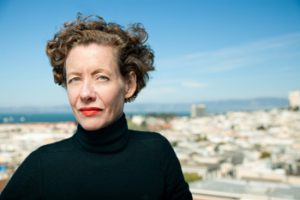Mary Ellen Hannibal, Environmental Journalist
 Mary Ellen Hannibal is a long-time journalist focused on natural history and literature. Her most recent book, Citizen Scientist: Searching for Heroes and Hope in an Age of Extinction, was named one of 2016’s best non-fiction books by the San Francisco Chronicle. She is a recipient of the National Association of Science Writer’s Science and Society Award, among other honors, and is currently a Stanford media fellow.
Mary Ellen Hannibal is a long-time journalist focused on natural history and literature. Her most recent book, Citizen Scientist: Searching for Heroes and Hope in an Age of Extinction, was named one of 2016’s best non-fiction books by the San Francisco Chronicle. She is a recipient of the National Association of Science Writer’s Science and Society Award, among other honors, and is currently a Stanford media fellow.
What is the educational and career path that led to your current and past careers?
I started my career as a resolutely literary sort of journalist, working as a book review editor and a travel editor among other positions. About 20 years ago, my career distinctly morphed in the direction towards which it had been heading, which is science. My three most recent books all approach science through a broad, humanities-focused lens. My self-assigned task is to understand science, particularly related to ecology and biodiversity, and to recontextualize it for a broader audience than would otherwise be exposed to it.
Could you talk about how your book Citizen Scientist came to fruition?
Two big things happened while I was writing Citizen Scientist that changed how the book unfolds now. I had written a whole draft when my father died pretty suddenly, of lung cancer. My father was a writer, and taught me to be one too. Both writing and citizen science are based on observation. As he was dying, my father wanted to be read the short stories of Ernest Hemingway, ad infinitum. These are pretty grim, all day long. Yet as I was reading them aloud I realized that Hemingway was doing what Joseph Campbell says is the task of being human, which is to put yourself in alignment with nature. For various reasons, Campbell is a major thread of my book, and this visceral experience of observation, loss, literature, and re-alignment just stared me down. I had to include losing my father in the book.
Secondly, while reporting on an “extreme citizen science” project in the Santa Cruz Mountains, I had the revelation that most citizen science projects today address social and environmental woes that have a historical foundation. I realized that we tend to think of human history as separate from Earth history, partly because we experience our own lives in such a short time frame, and of course Earth’s history is long. Today, these histories are powerfully colliding. So I restructured the book to have an historical flow.
What environmental issues are of most concern to you?
This mash-up of human and Earth history brings me to the environmental issue that concerns me the most: extinction. Currently we are losing plants and animals at a rate and magnitude equaling that which took out the dinosaurs. E.O. Wilson himself says this crisis is much more consequential than climate change. We can live in an altered temperature and precipitation zones, but we don’t have life on Earth without the interactions of species other than Homo sapiens. Citizen science takes its playbook from conservation biology, which Wilson helped found, and which proscribes what we have to do to save nature. There are many, many examples in my book of projects in which to get involved.
Learn how to get involved with citizen science in the San Francisco Bay Area in this month’s blog post.
